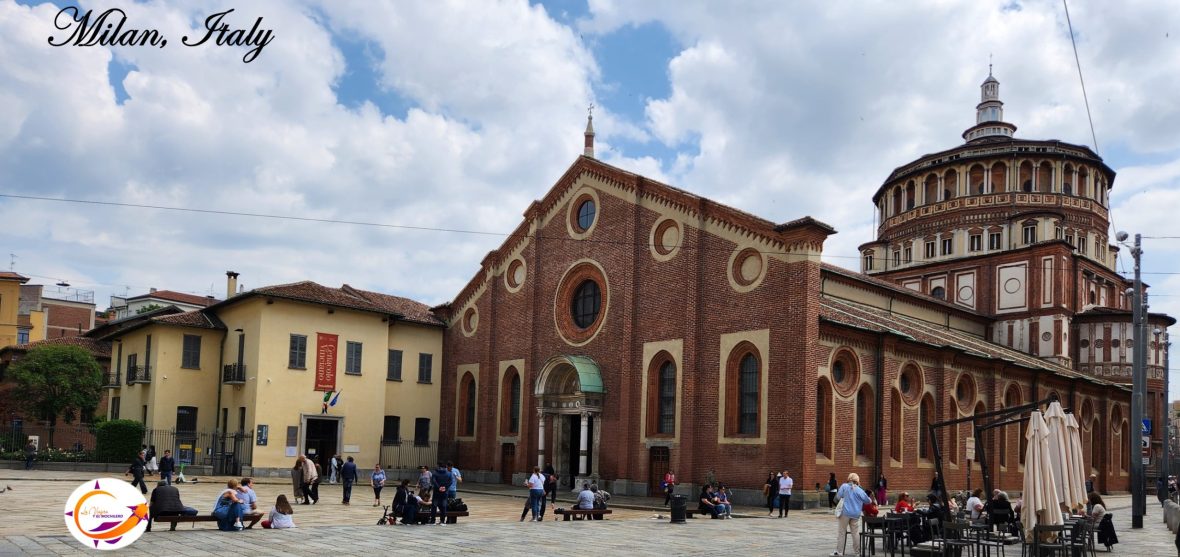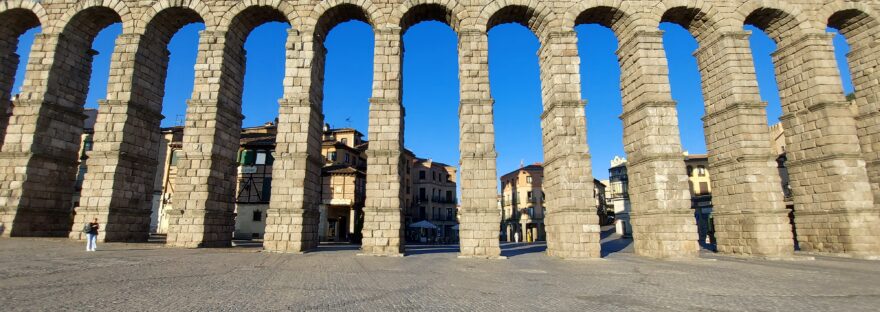After seeing countless published photos of the Aqueduct of Segovia, we could not miss this beautiful Spanish city and observe at first sight this great monument.

When we got off the bus at the Aqueduct 3 stop located on Via Roma Avenue, we were overwhelmed by this monumental work of Roman engineering. The Aqueduct has 167 arches and with its almost 30 meters high it transported water along 16,222 meters or just over 16 kilometers, taking advantage of the unevenness of the terrain to supply precious liquid to the inhabitants of Segovia.

Its construction dates to the beginning of the 2nd century A.D., at the end of the reign of Emperor Trajan and the beginning of Hadrian’s reign, both from “Hispania”. It can be said that the Aqueduct is a symbol of the period of splendor that the Roman Empire lived, showing its great mastery of engineering.
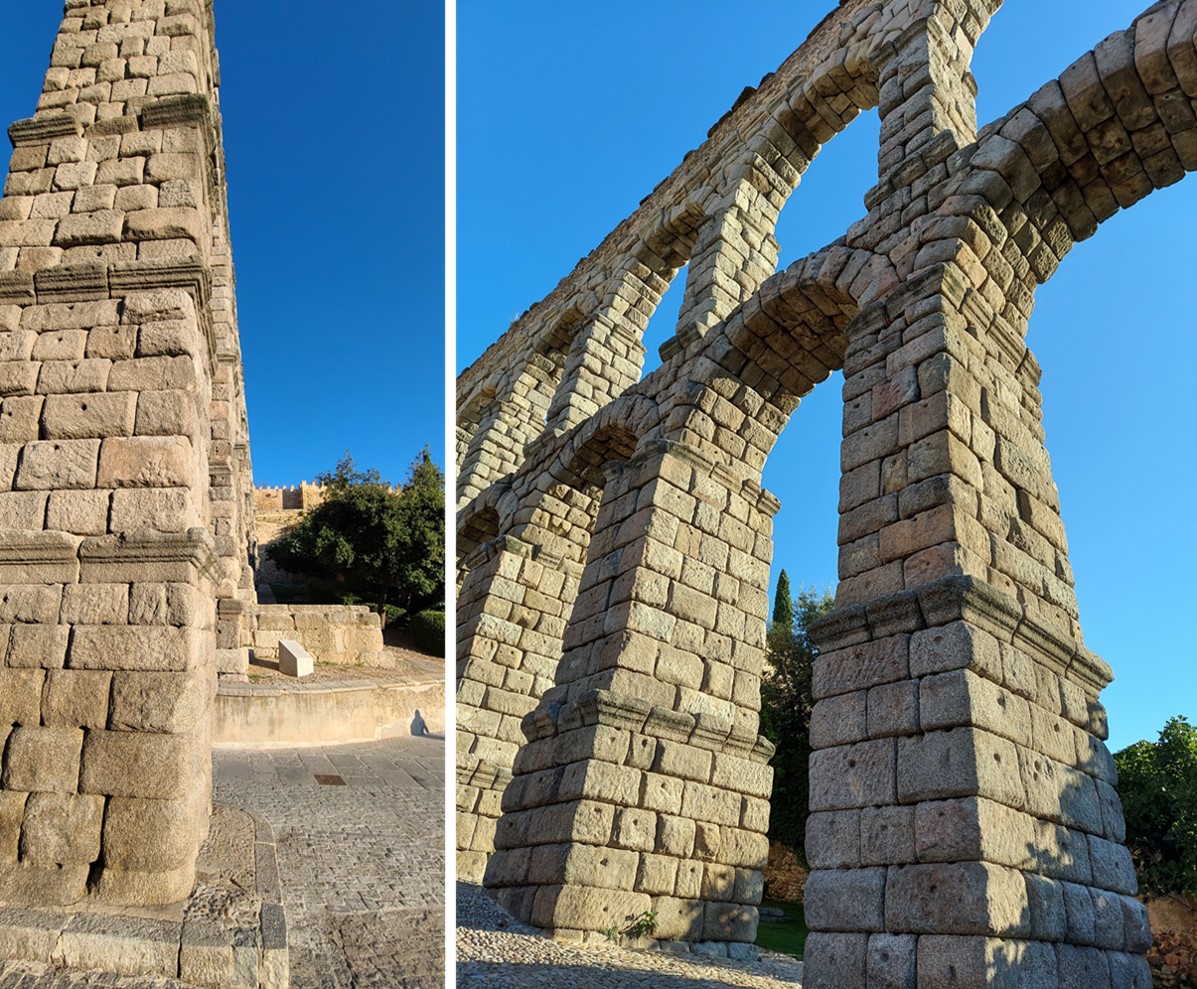
The arches of the Aqueduct of Segovia consist of 120 pillars that support 167 arches with granite ashlars, stones carved in the shape of a rectangle, set without mortar between them. That is, without using a mixture of lime, sand and water to join the blocks or stones. It is surprising the perfection of the thrust forces between the large stone blocks.
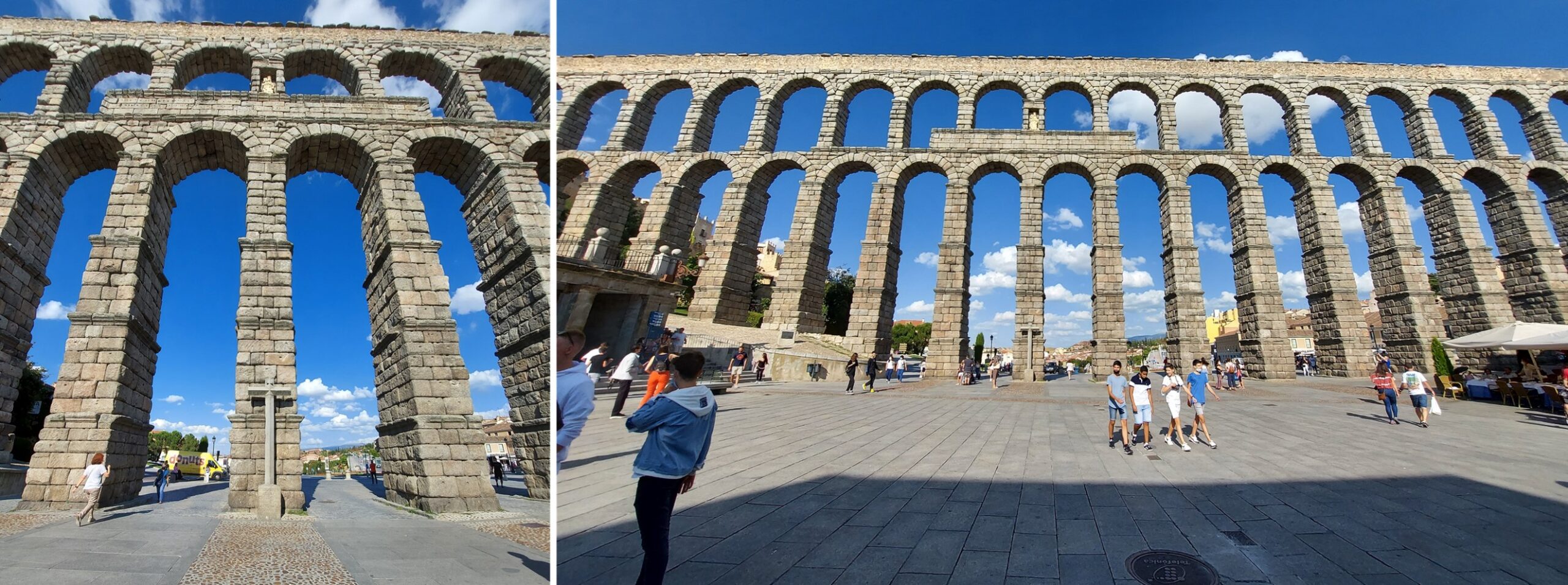
The construction is divided into three parts: the extra-urban area, from where the water was collected; the peri-urban area, the section of the aqueduct that carried the water; and the urban area, where the water was not only carried but also distributed to its destination. In addition, the fountains and cisterns of private homes were part of the water distribution system through the Segovia Aqueduct.

The Segovia Aqueduct consisted of at least 15 kilometers of underground or subterranean channels, and not only the water came from the “Sierra de Guadarrama”, but also the construction materials, such as the blocks of granite.
It was during the reign of the Catholic Monarchs that the first major reconstruction of the aqueduct was carried out, where 36 of its arches were worked on, retaining the respect for the original construction. Later, in the 16th century, the statues of the “Virgen del Carmen” and “San Sebastian” were placed in the central niches. Today only the first carving, that of the Virgin of Carmen, can be appreciated.

The most visible part, and therefore famous, is the arcade that crosses the “Plaza del Azoguejo”, to the left of the Aqueduct. To the right is the “Plaza de la Artillería” and when viewed from above, it would seem that the Aqueduct divides the city in two. However, it coexists harmoniously with the rest of the city’s architecture, such as the Cathedral of Segovia, the walls and the Alcazar.
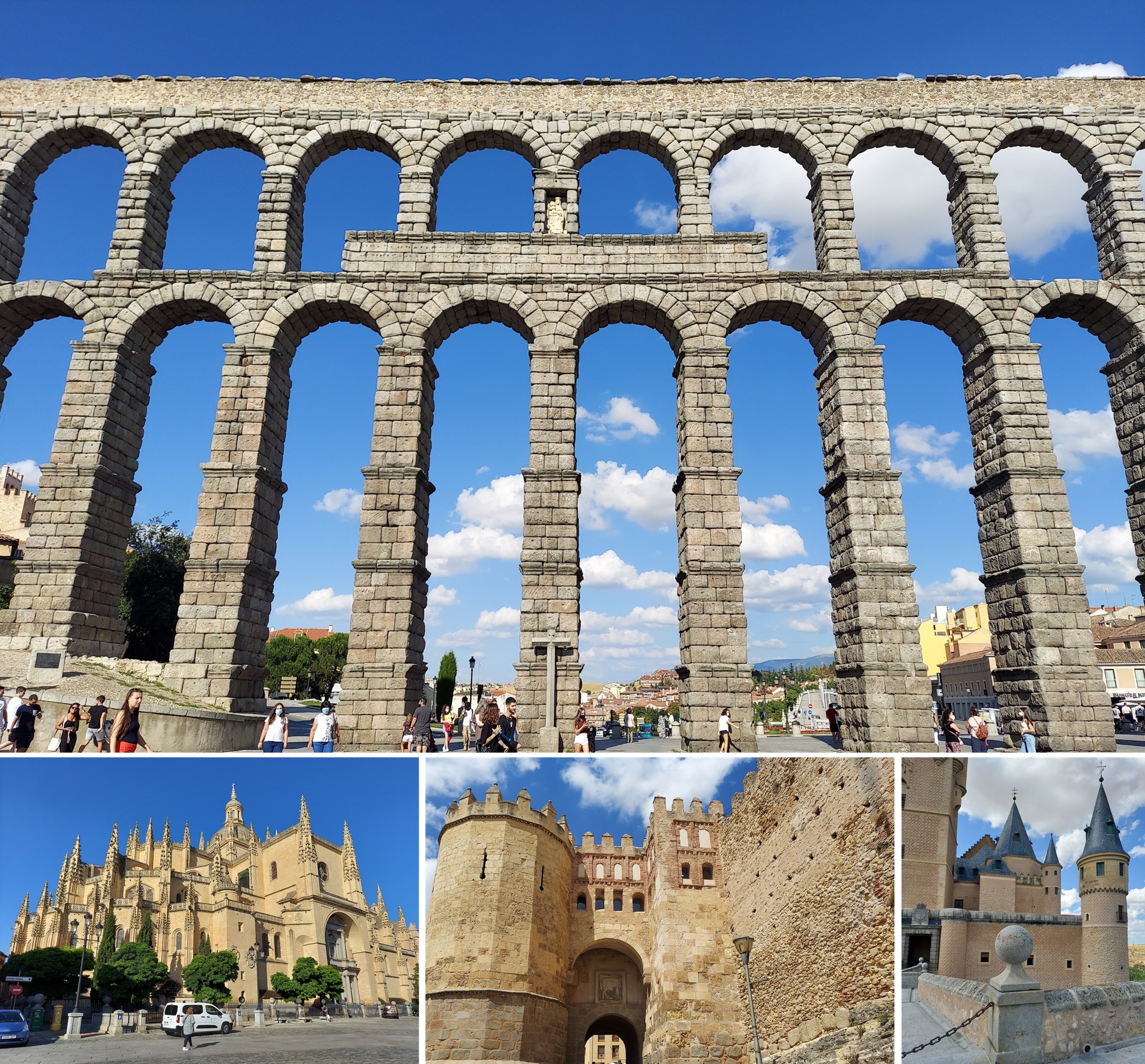
Throughout the centuries, the Aqueduct of Segovia has remained in operation and perhaps that is why it has reached our times in a well-preserved state. In fact, it supplied water to the Alcázar of Segovia, until not so long ago. Although efforts have been made to restore and conserve the Aqueduct, the reality is that both environmental pollution, including the nearby traffic of motor vehicles, and the natural process of erosion of the granite, have not made the task of conserving this great monument entirely easy.

One of the best known legends about how the construction of the Segovia aqueduct came about is that a little girl used to go up to the top of the mountain every day and come down with a pitcher full of water. One day, fed up with that, she asked the devil to build a way so that she would not have to go up and down every day with the pitcher. Then, at night, the devil appeared to her and granted her wish in exchange for her soul, if she managed to finish the aqueduct before the cock crowed. The girl accepted and the demon began to build the aqueduct, at which point the girl regretted having wished for it. Just when she had one stone left to finish, the rooster crowed, which caused the demon to fail and the girl did not lose her soul. In the space that remained is where the statue of the Virgin is now found.
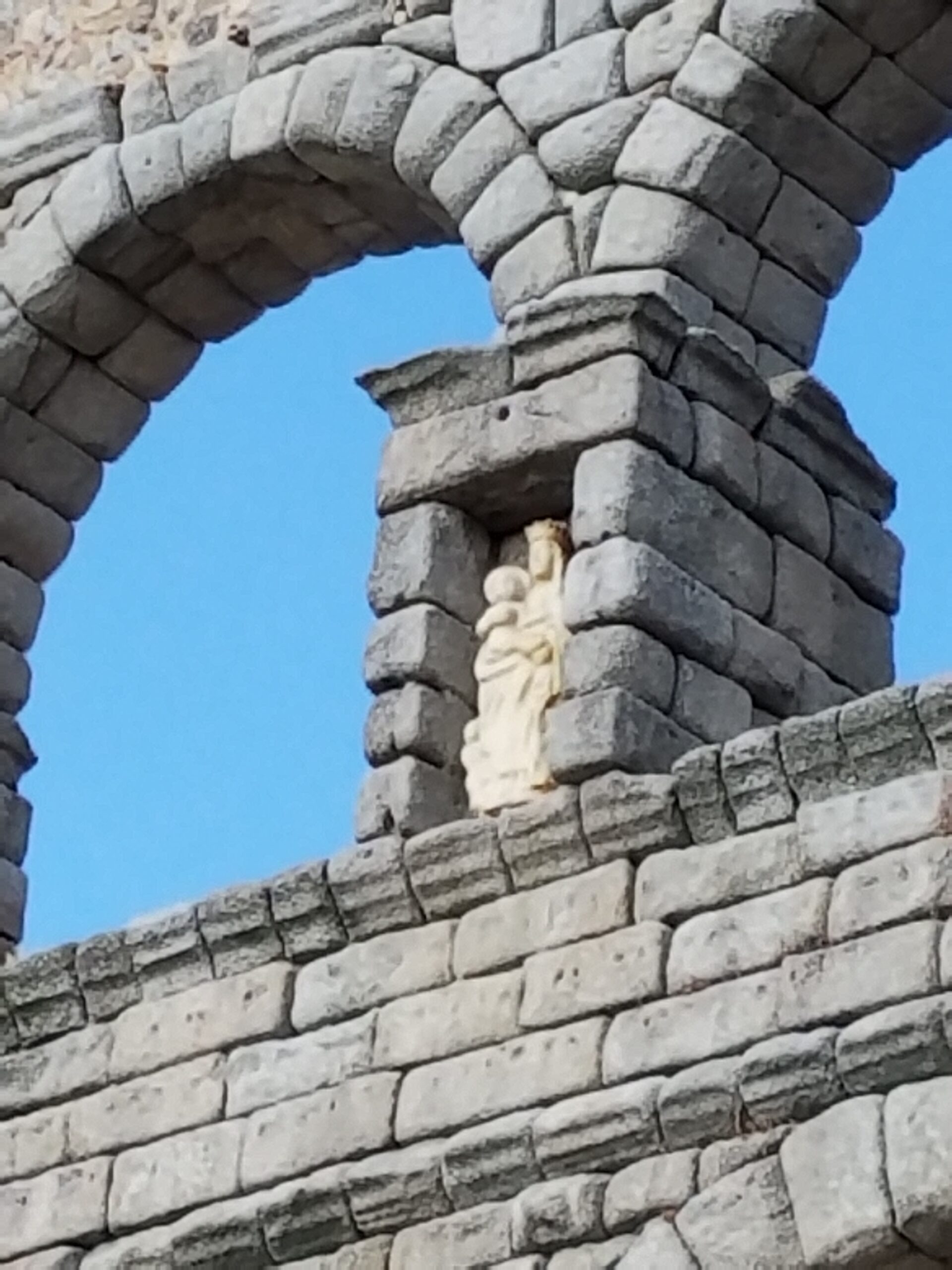
Resources:
- https://historia.nationalgeographic.com.es/a/acueducto-segovia-es-mas-reciente-que-pensabamos_10826
- https://es.wikipedia.org/wiki/Acueducto_de_Segovia
